
“Can you drop me off at Lalo’s place?” I ask the bus driver, as I was told. It seemed like a strange request here in Llanos de Cortés, Bagaces in the middle of a windy, dusty landscape full of narrow trees without shade.
“Of course,” he responded without further questions. Upon reaching the first few houses, he drops me off in front of an old, wood house surrounded by dry calabashes, hammocks and fruit trees.
Eulalio Guadamuz is a quijongo player from Liberia and, at age 93, he may be the oldest in the province. Lalo, as everyone knows him, has been recognized by the Culture and Youth Ministry as one of the bearers of the quijongo tradition in Guanacaste (he won the national popular culture award in 2014) and, therefore, responsible of making this Guanacaste instrument sound today.
Lalo asks me to accompany him to his small workshop on the other side of the yard where he builds the quijongos. We cross dry and cracked soil similar to his skin, but his fertile memory recalls names and events with calendar-like precision.
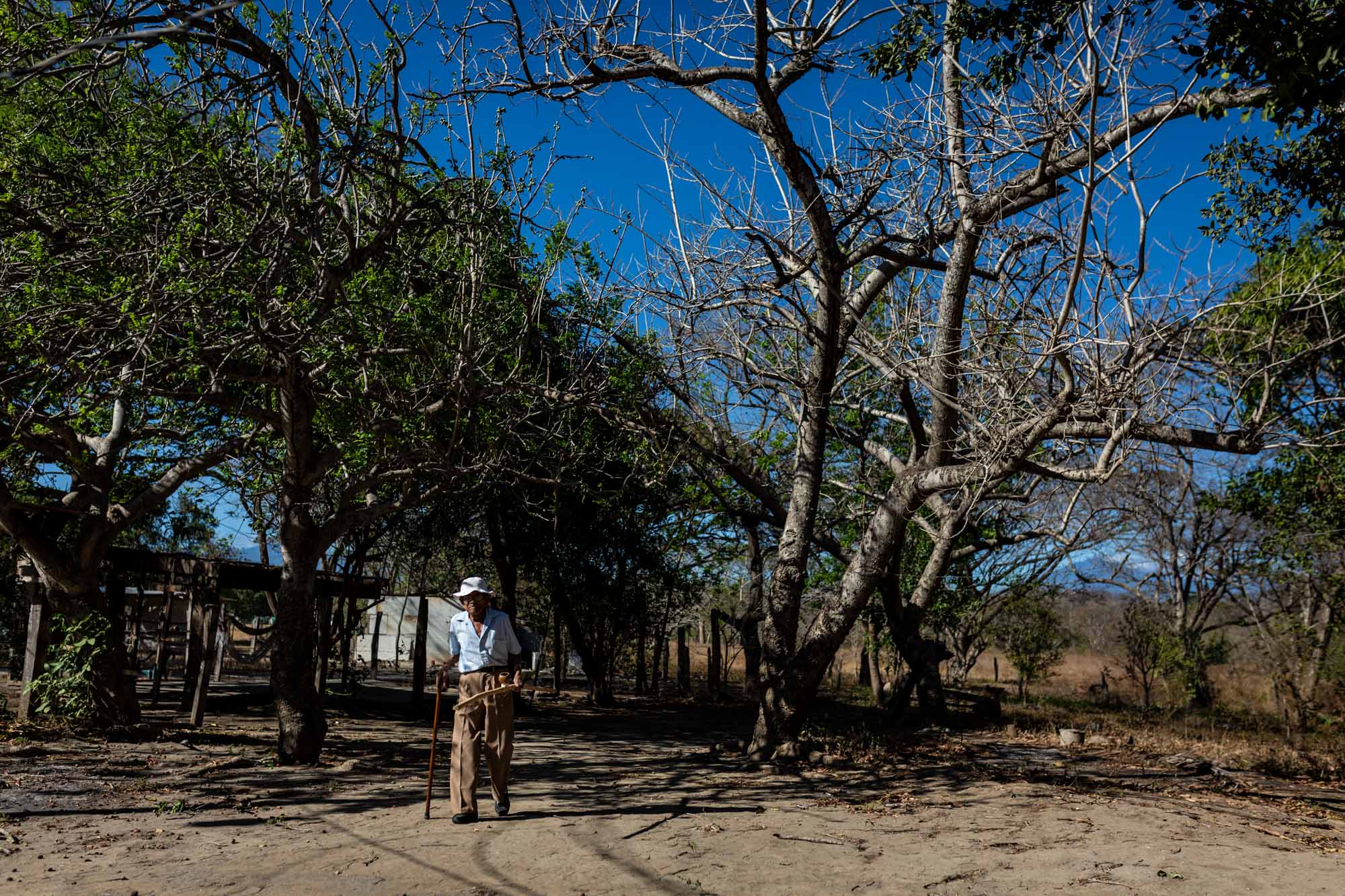
Lalo walks to his house from his workshop, located in Llanos de Cortés, with one of the quijongos he made.
In 1940, when he was 14, he worked on a farm in Bagaces and every time they sent him to do a chore on the ranch he used the bosses quijongo while he wasn’t around.
“I learned to make them and tune them on my own, but I did it as a hobby,” Lalo says, remembering his days as a kid when he didn’t know that his adventures would end up becoming a way to preserve an old tradition.
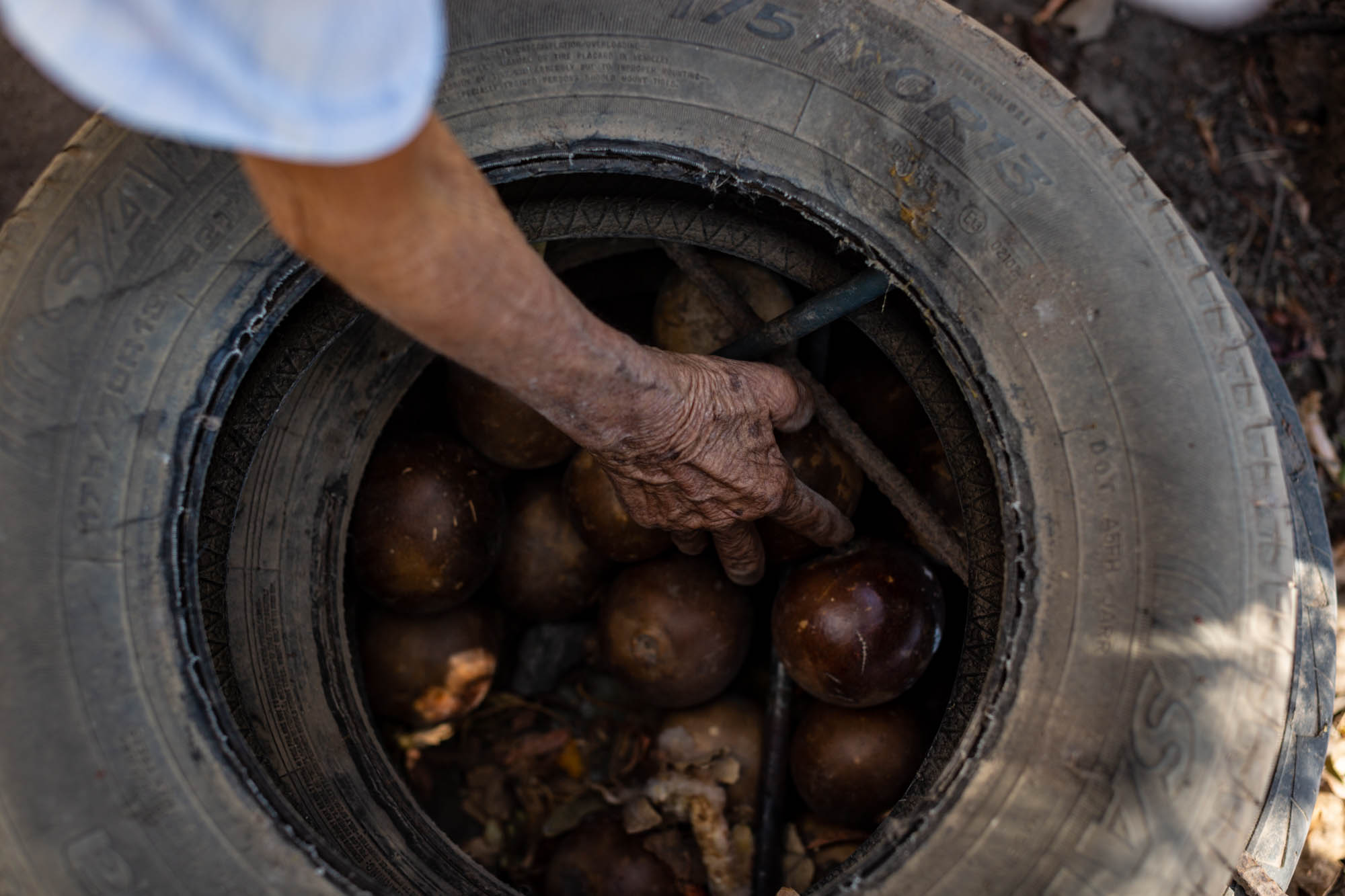
Lalo picks a calabash from the bunch that he has drying on his porch to create the resonator.Photo: César Arroyo
The Builders of Rhythm
The quijongo is a homemade gadget that looks more like an indigenous weapon than a musical instrument. It has a rough finish and, at first sight, looks like an improvised piece. But 10 years ago the Guanacaste Culture Department started to pay more attention to it, research it, hold workshops and collect testimonies like that of Lalo in an effort to preserve it.
“From 2008 onward they started to take it seriously,” he says as he gathers all the things he needs to make one. “That year, I taught 16 music teachers how to play it.”
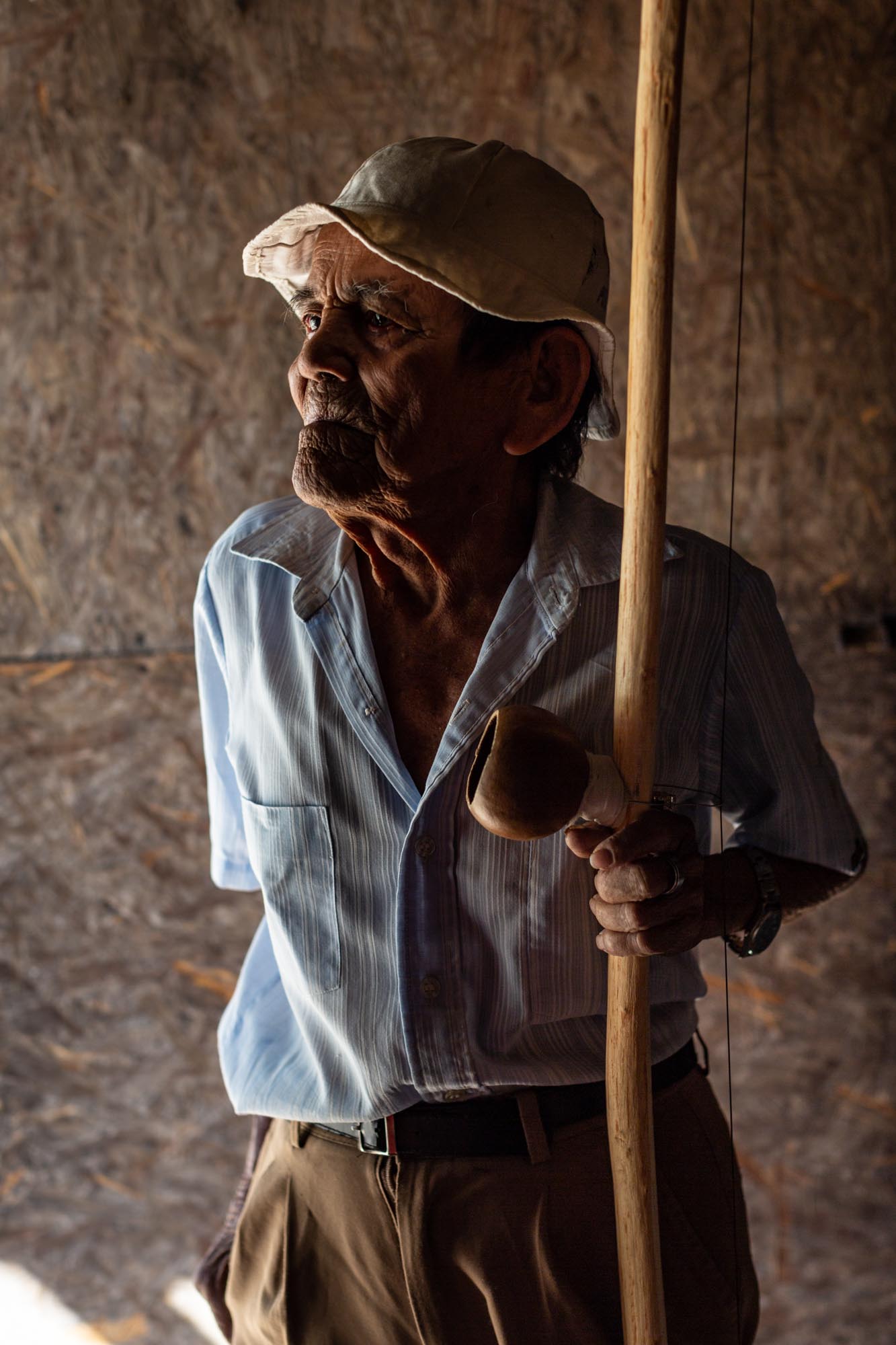
At age 93, Eulalio Guadamuz Guadamuz is one of the oldest quijongo masters in the province. He has received many honors including Living Human Treasure from Unesco’s International Council on Monuments and Sites.Photo: César Arroyo
That knowledge lead to the guide to building and playing the Guanacaste quijongo, created by Guanacaste musician Karol Cabalceta and anthropologist Adriana Méndez.
This guide is an illustrated manual for anyone to learn how to build and play the quijongo, that you can download in this link for free.
According to Cabalceta, those who play the quijongo must also learn to build it. “The connection with the instrument changes entirely when those who take the workshop go out into the field to choose the wood and calabash to assemble them,” she says.
Lalo strikes the bay cedar with a strength that makes him look young again. While he works, he starts to number off the steps for building a quijongo. According to the guide, the process varies little depending on the zone that the quijongo player comes from.
In order to build it from scratch, you need six items: a calabash, which are common throughouot the province, a branch from a bay cedar tree, wire from a car tire, a silk handkerchief, sweet wire (found by that name at the hardware store) and a small wooden stick or umbrella rod.
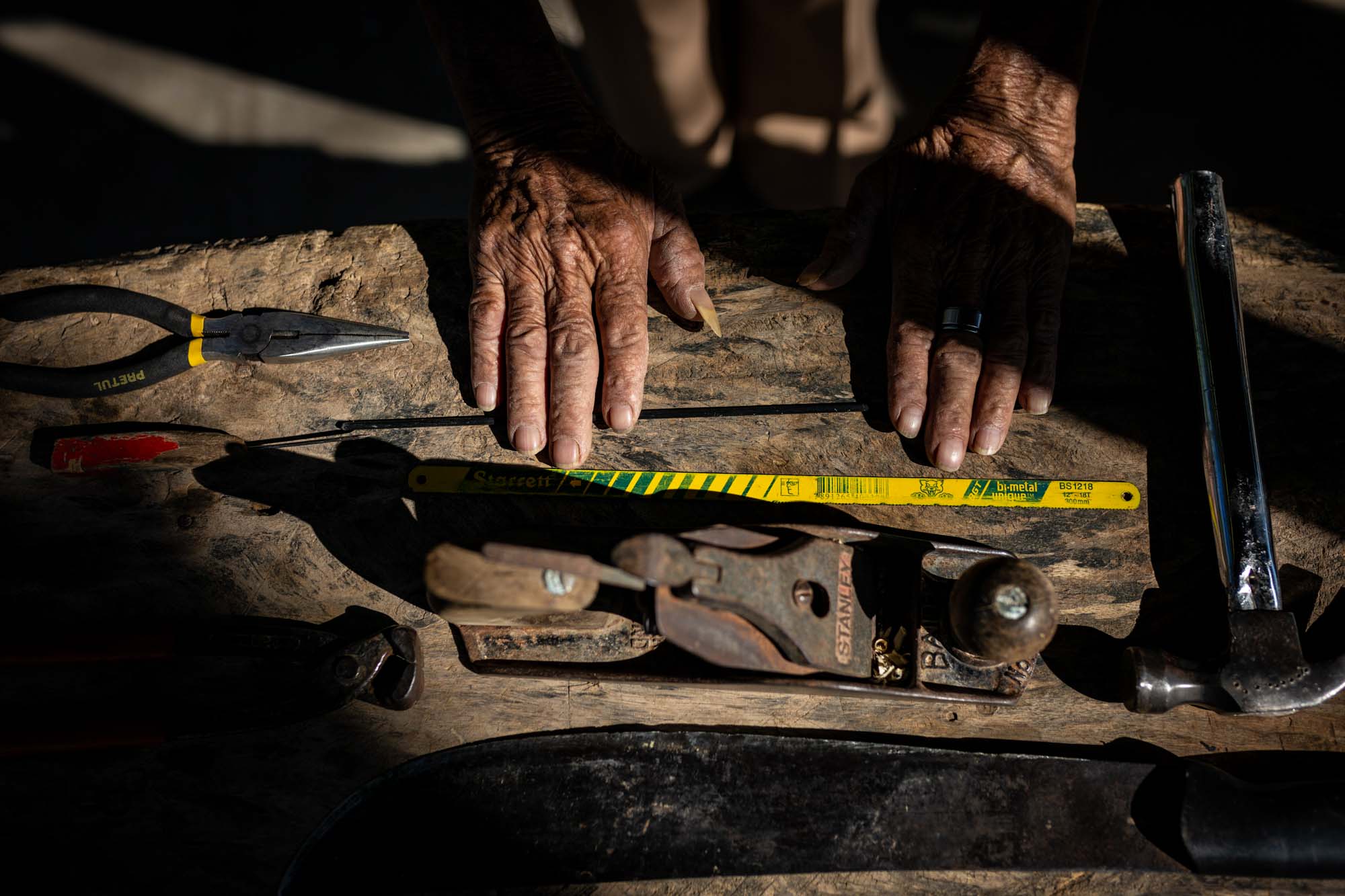
Lalo shows the tools he needs to work. Among them are pliers, a machete, a fretsaw and a carpenter’s brush.Photo: César Arroyo
His family members live nearby and bring the materials to him every day so that he can spend his afternoons building them and giving life to one more instrument.
Lalo starts to give form to the quijongo when he stretch the wire with the calabash. With each strike of the stick, the air vibrates and Lalo moves his palm towards the resonator until he gets the perfect sound. A deep, electric sound rings through the corners of the small workshop with no walls and a tin roof.
That sound taught him songs, joined him at night after working in the fields, gave him tamales to eat on December 24 when he played along with maracas and marimbas all throughout Bagaces.
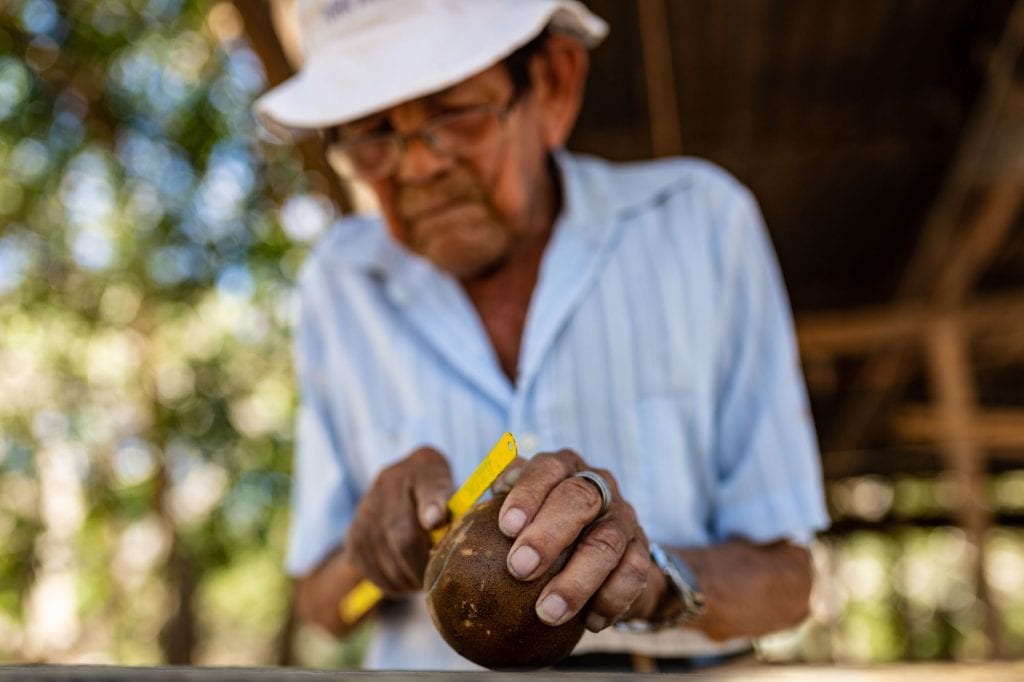
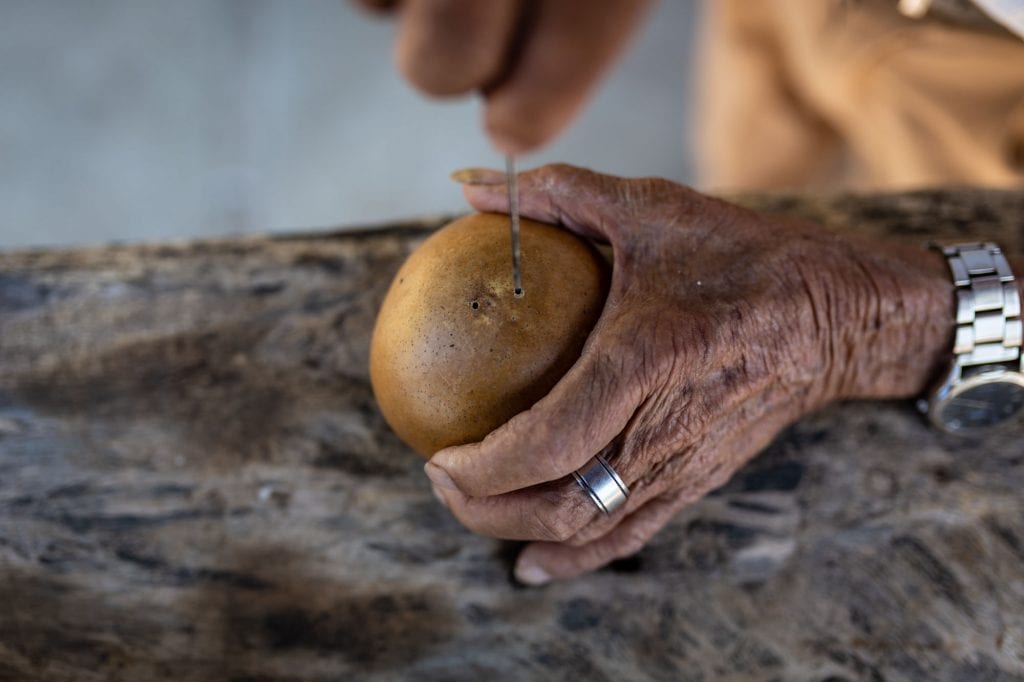
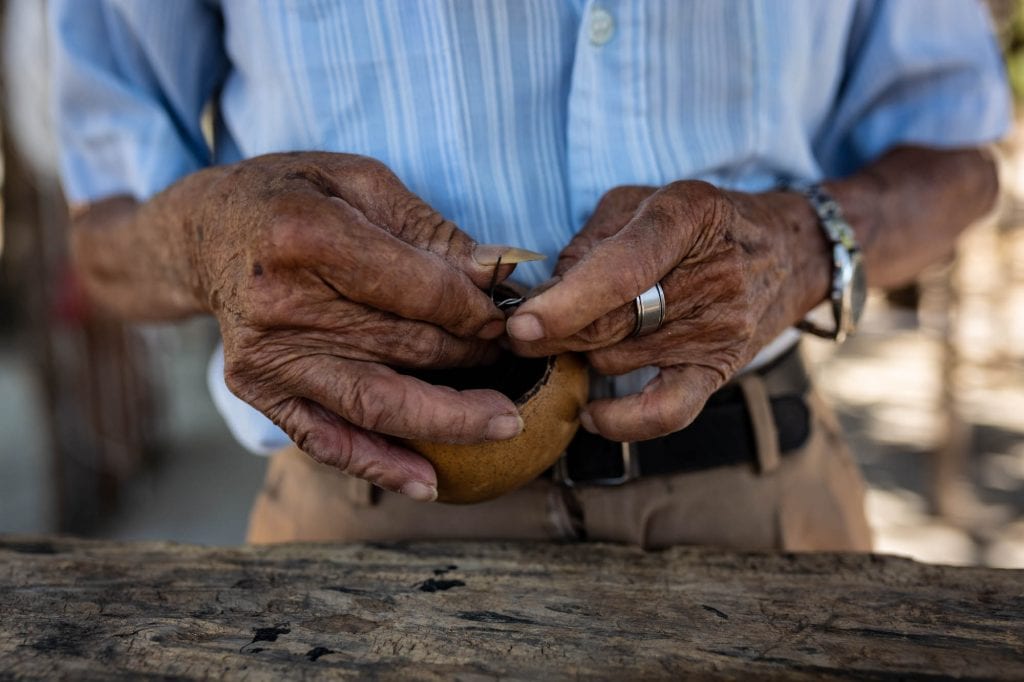
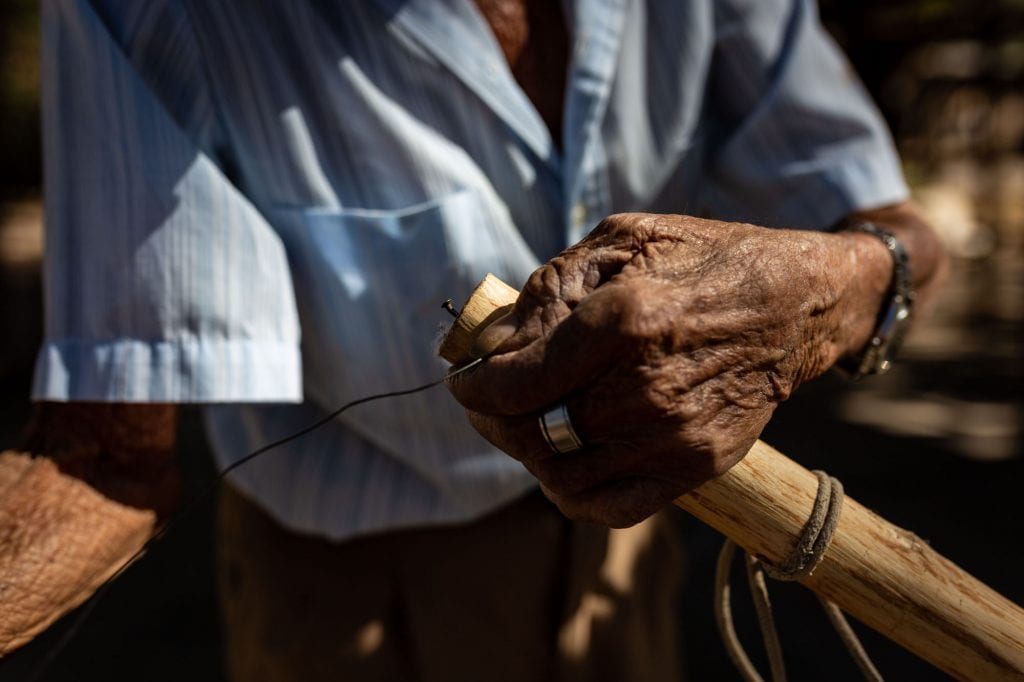
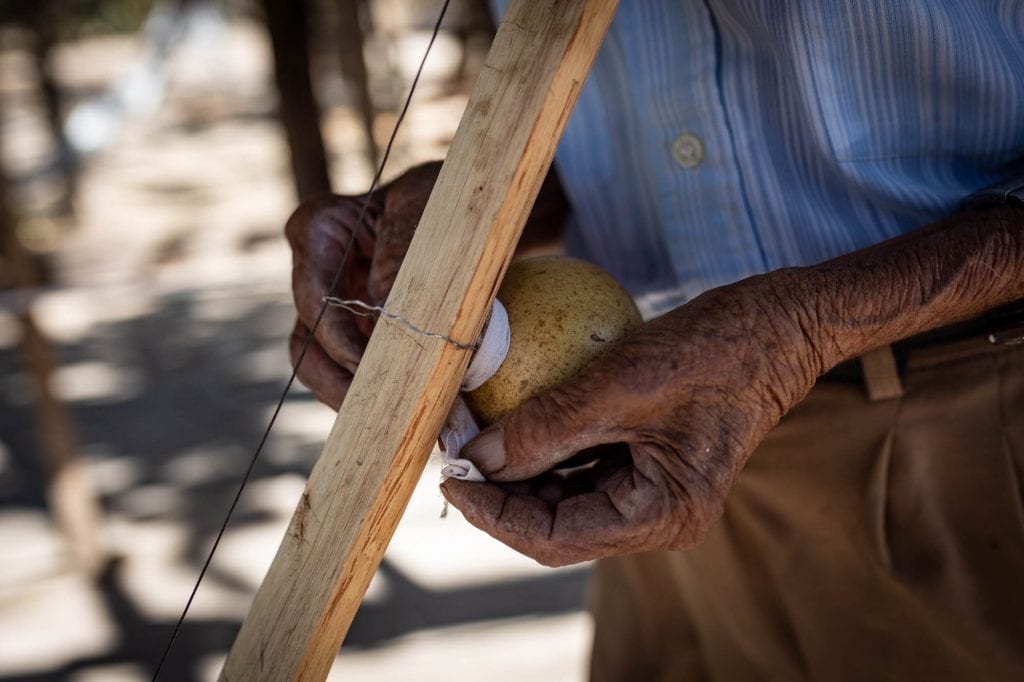


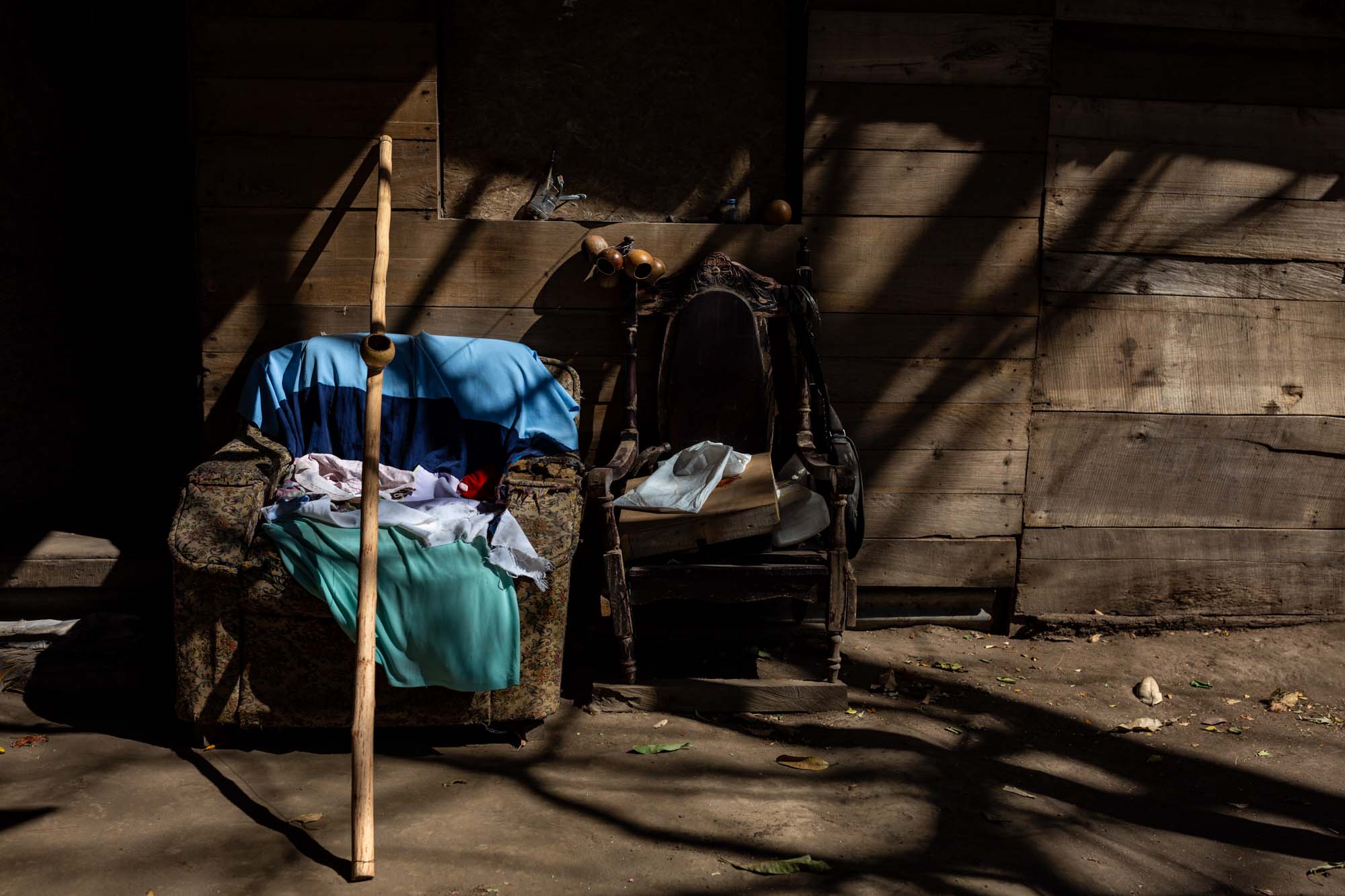

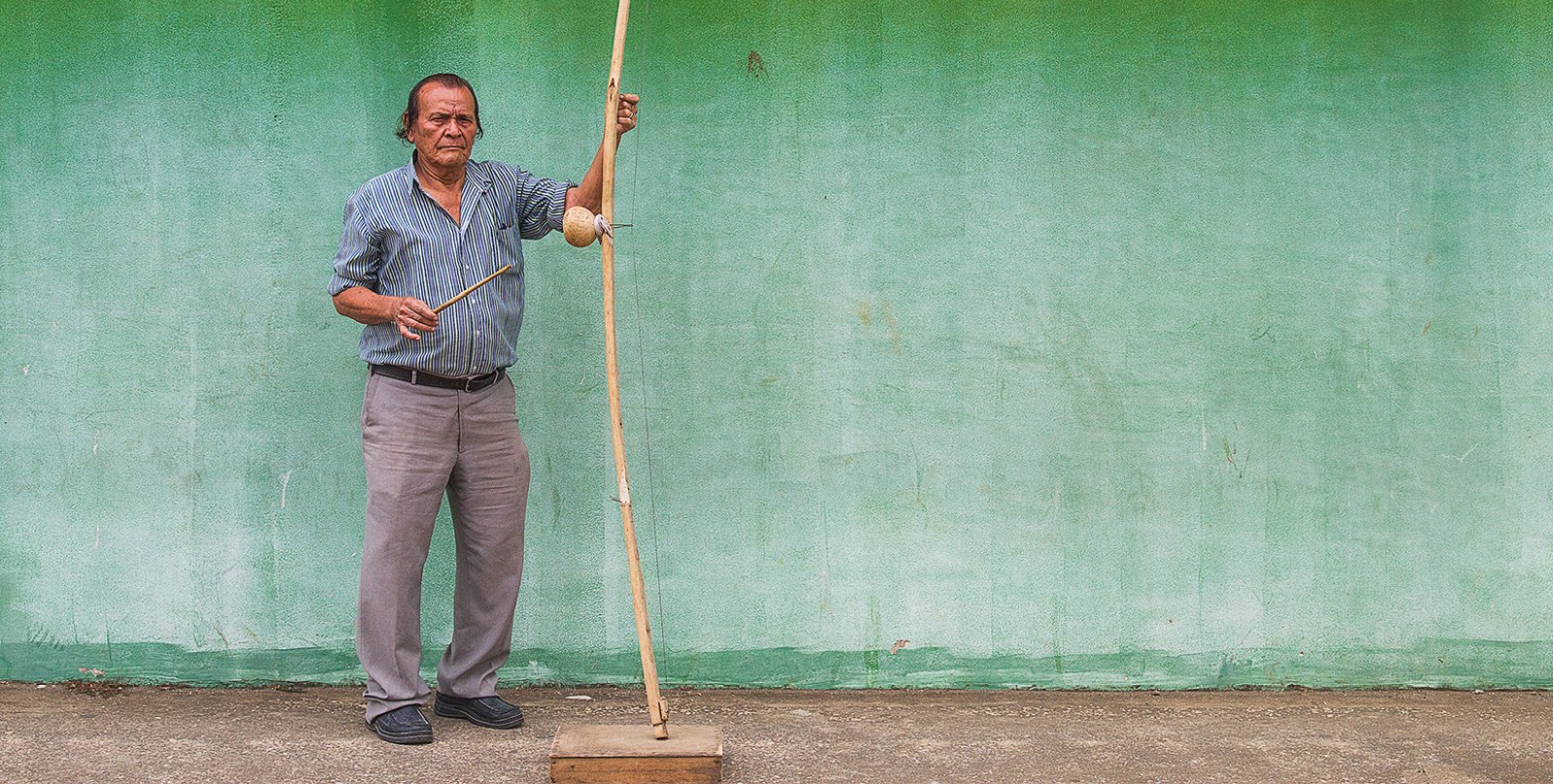
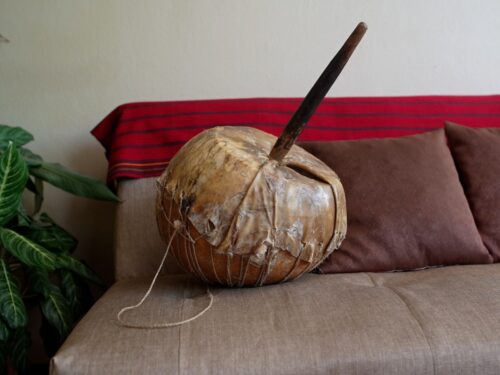

Comments